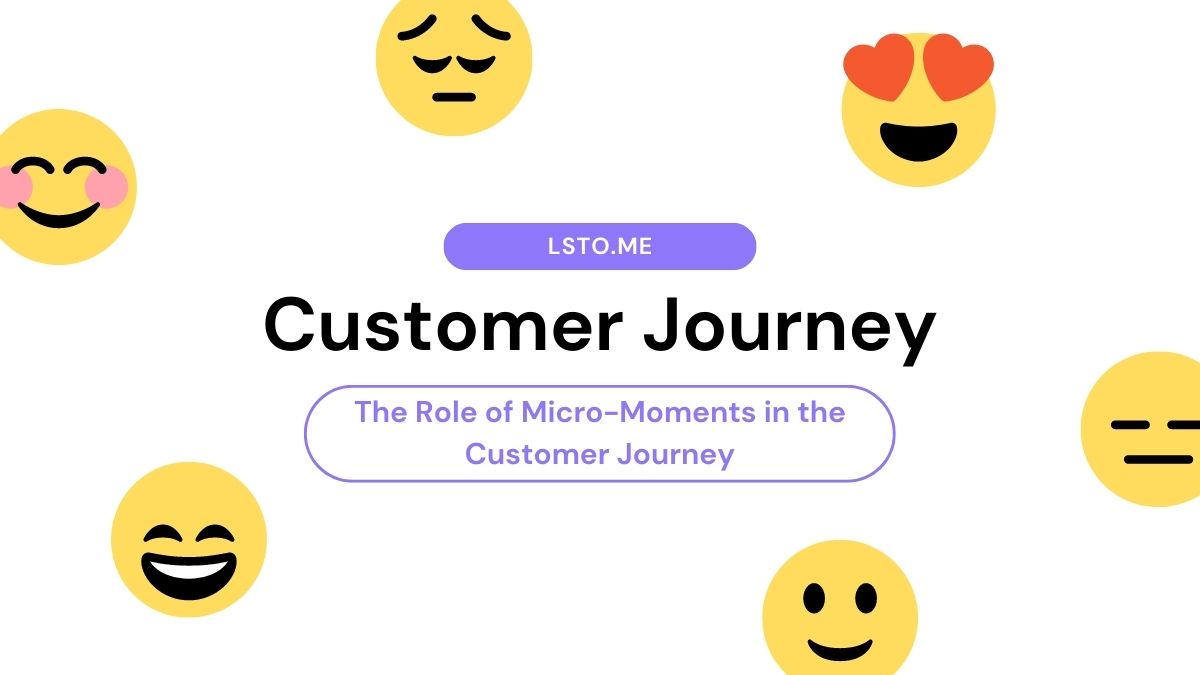
In today’s digital landscape, consumers are constantly connected to their smartphones, seeking instant information, inspiration, and solutions. This behavior has given rise to micro-moments, which are critical touchpoints throughout the customer journey. Understanding and leveraging micro-moments can significantly impact your marketing success. In this blog post, we’ll explore the role of micro-moments in the customer journey and how you can seize these opportunities to drive engagement and conversions. Let’s dive in!
1. Defining Micro-Moments:
In today’s fast-paced world, customers demand quick and immediate solutions to their problems. This has given rise to the concept of micro-moments, which are small instances when consumers look for instant answers to their queries. These moments can occur anytime and anywhere – while commuting, waiting in a queue at the grocery store, or even in bed before sleeping.
Micro-moments may seem insignificant, but they play a crucial role in shaping a customer’s buying journey. According to Google, “These micro-moments are critical touchpoints within today’s customer journey.” By understanding these moments and catering to them effectively, businesses can create a positive impact on the overall customer experience. Companies that have successfully leveraged micro-moments have seen increased engagement rates and higher conversions.
To capitalize on these micro-moments, businesses must be present where their customers are searching for information.
2. Anticipating Customer Needs:
In today’s digital age, customers demand instant gratification and seamless experiences. This is where micro-moments come into play. These are instances when a customer turns to their mobile device for a quick solution or answer to a question. To effectively leverage these micro-moments, businesses must anticipate their customer’s needs and provide relevant content and solutions.
One way businesses can anticipate customer needs is by understanding their behavior patterns. By analyzing data from past interactions, companies can develop strategies that cater to their audience’s preferences and habits. For example, if a company notices that most of its customers prefer to shop online during the evenings, it could focus on optimizing website performance during those hours.
Another method of anticipating customer needs is personalization. Personalizing experiences through targeted marketing campaigns or product recommendations helps companies tap into the customers’ buying mindset further.
3. Optimizing for Mobile:
Optimizing for mobile means ensuring that your website is responsive and loads quickly on smaller screens. It also involves designing content specifically for mobile users, such as creating bite-sized pieces of information that can be easily consumed on the go. In addition, incorporating features like click-to-call buttons or chatbots can further enhance the user experience and provide a more personalized touch.
By focusing on mobile optimization, businesses can better meet the needs and expectations of their customers in today’s fast-paced world.
4. Providing Quick and Relevant Information:
In today’s fast-paced world, consumers expect quick and relevant information at their fingertips. Micro-moments are characterized by a need for immediate answers to specific questions or problems. These moments can occur anytime, anywhere – while waiting in line at the grocery store or during a commercial break on television.
To effectively engage customers during micro-moments, businesses must tailor their content to be concise and easily scannable. Traditional long-form content may not be effective as consumers do not have the time or patience to read through extensive articles. Instead, businesses should focus on providing valuable insights in short bursts of information that are easy to digest.
Micro-moments in the customer journey offer an opportunity for businesses to create a meaningful connection with their audience. By delivering quick and relevant information when it is needed most, companies can build trust and establish themselves as authoritative sources within their industry.
5. Embracing Personalization:
Personalization has become a buzzword in the world of marketing and with good reason. In today’s digital age, customers expect personalized experiences that cater to their unique needs and preferences. This is especially true during micro-moments, which are the brief moments when customers turn to their devices to fulfill an immediate need. These moments can happen at any time and any place, making it crucial for businesses to leverage user data such as location, preferences, and past interactions to provide relevant content.
Micro-moments occur throughout the customer journey from awareness to purchase and beyond. By leveraging user data, companies can provide timely, relevant content that meets the customer’s immediate needs. For example, a coffee shop could use geolocation data to send notifications about nearby store locations or specials when a customer is nearby. Similarly, an e-commerce company could recommend products based on previous purchases or search history.
6. Seamless Multi-Channel Experience:
In today’s fast-paced, digital world, customers have more options than ever before when it comes to making purchases. They may start their buying journey by browsing on social media, then move on to search engines or online marketplaces for product research. Eventually, they might even make a purchase in-store or through a mobile app. With so many channels available, businesses need to provide a seamless multi-channel experience that meets the needs of customers at every stage of their journey.
One critical aspect of this multi-channel experience is understanding micro-moments. These are the small moments throughout the customer journey where customers make decisions based on their immediate needs and preferences. For example, if someone is researching products online and finds an item they like but wants more information about shipping costs before purchasing, this is a micro-moment.
7. Analyzing and Optimizing:
To optimize your marketing strategy, it is crucial to understand how micro-moments work. By analyzing data from these moments, you can gain valuable insights into customer behavior patterns and preferences. This information can help you tailor your marketing messages and improve the overall customer experience. A successful marketing campaign is all about being in the right place at the right time with the right message – micro-moments provide that opportunity.
Conclusion:
Micro-moments provide valuable opportunities for businesses to engage with their target audience and influence purchase decisions. By understanding the different micro-moments throughout the customer journey, anticipating customer needs, optimizing for mobile, providing quick and relevant information, embracing personalization, delivering a seamless multi-channel experience, and continually analyzing and optimizing your approach, you can effectively leverage micro-moments to drive engagement, conversions, and long-term customer loyalty. Seize the power of micro-moments, and be present when your customers need you the most!




